Tight margins. Tough decisions. Roland Berger helps you optimize to outperform.


Sustainable savings, maximum margins
A cross-functional approach to product cost optimization that drives innovation and growth
As market pressures rise, more and more manufacturers are realizing that traditional cost-optimization strategies are not achieving the savings they need to gain a competitive edge. So how can companies maximize efficiencies while building a sustainable future? Roland Berger’s ‘360° Product Cost Optimization’ approach offers a solution, unlocking additional savings of up to 30% across the entire product lifecycle.

When times are tough, cost optimization is the go-to savings lever for manufacturers. Indeed, in the current climate of high inflation, rising tariffs, supply chain disruptions and increasing competition from lower-cost countries, cost efficiencies have become a necessity.
"Breaking down functional silos is often the single biggest challenge to unlock sustainable product cost reduction."
The problem is, traditional cost-optimization strategies – such as supplier renegotiations and best-cost country sourcing – are no longer sufficient. All too often, they fail to address broader cost drivers embedded in design, engineering, production and logistics. This narrow focus limits their scope to generate deeper, more sustainable savings.
This is where cross-functional product cost optimization can help. It deploys a collaborative approach, leveraging the collective knowledge of engineering, procurement, manufacturing, sales and controlling teams to address cost drivers across the entire product lifecycle. The strategy enables organizations to achieve both immediate cost reductions and long-term operational efficiency – with results 2-3x higher than isolated procurement initiatives, for example.
So how can companies reap the benefits? Roland Berger’s ‘360° Product Cost Optimization’ approach ensures organizations can unlock additional savings while driving innovation and growth. It combines procurement strategies, design-for-cost principles, production efficiency improvements and logistics optimization to cover all cost levers in a single unified framework. Available for download on this page, the report “Mastering product cost: 360° cross-functional product cost optimization for sustainable margin improvement ” outlines how it works.
Why you need a cross-functional strategy
Cross-functional product cost optimization strategies are so effective because they can be applied across the entire product lifecycle, unlike siloed, procurement-led initiatives. For example, in the early stages of product development, design decisions can determine up to 80% of total product cost, making this phase critical for leveraging cost-saving opportunities. By focusing on material selection, design-for-manufacturing principles and supplier collaboration early on, organizations can avoid costly inefficiencies later in the lifecycle, such as redesigns, and ensure competitive sourcing. In later production stages, the focus can then shift to optimizing manufacturing processes, improving production efficiency and reducing waste, helping to ensure sustained cost control.
Applied together, these efforts create a continuous improvement loop that drives both short-term savings and long-term competitiveness. Embedding cost awareness into each phase reduces expenses, accelerates time-to-market and improves product quality while enhancing operational efficiency. Depending on the product and industry, such approaches typically deliver 10–30% reductions in direct material costs and 5–15% improvements in time-to-market, for example.
Implementing cross-functional product cost optimization can be challenging, however. In particular, the complexity of aligning diverse teams – each with its own priorities and technical focus – can hinder progress and limit results, and most organizations do not have a single function with the mandate, expertise or capacity to manage such a comprehensive effort. This is where our structured approach adds significant value.
"On average, clients applying the Roland Berger 360° approach realize gross product margin improvements in the respective product of 15–25% within 12–18 months."
Our roadmap to maximum savings
The ‘360° Product Cost Optimization’ framework overcomes this complexity, ensuring that all the primary cost-saving target areas – commercial, technical and process-related – are systematically addressed. It deploys four levers to facilitate strategic cost optimization across all areas of an organization. Each lever typically contributes 5–15% cost improvements on its own, while activating them in combination amplifies the results. For example, the technical levers include tools to simplify design and standardize production, while commercial levers provide support to better negotiate with suppliers and explore global sourcing.
The approach is executed in several stages. We start by establishing a robust fact base. This includes product teardowns, competitor benchmarking, detailed should-cost calculations and gap analyses, all supported by our proprietary tools (such as the PolarixCosting System). Next, in structured workshops informed by the previous analyses, we bring together cross-functional client teams to co-develop and prioritize cost-down and value-up measures.
Thirdly, we look at implementation, assessing each measure for savings potential, ease of roll-out and cost. Based on this, we create a clear, actionable roadmap with defined responsibilities, timelines and tracking mechanisms. Lastly, we offer structured and expert execution support, including on preparation for supplier negotiations and changes to production processes. Clients value the flexibility of our engagement models, which range from success fee-based pilots to full-scale programs tailored to strategic priorities.
The full report provides richer detail on all of these aspects of cross-functional product cost optimization. The final chapter also specifically covers how our 360° approach helps clients assess and activate cost levers at each lifecycle phase, from concept to in-series production. This is supported with real-life client case studies, for example, showcasing an industrial product client that reduced design complexity and material costs by 20% during development, and then achieved an additional 10% saving in series production through production and supply-chain optimization.
For more information about cross-functional product cost optimization, download the report or contact one of our experts. We look forward to hearing from you.
We would like to thank Markus Wiederstein and Marcel Schlimme from POLARIXPARTNER for co-authoring this publication. POLARIXPARTNER is a Roland Berger company.
Register now to access the full study. Furthermore, you get regular news and updates directly in your inbox.










